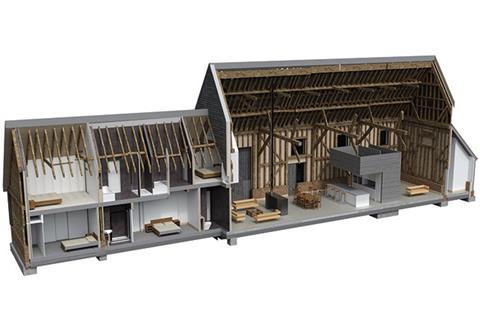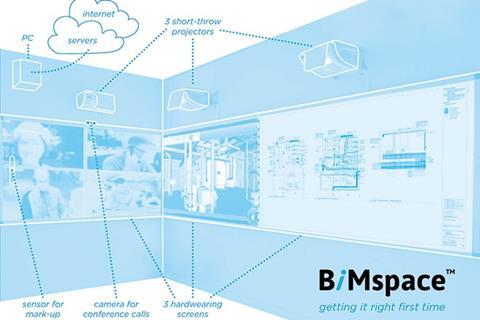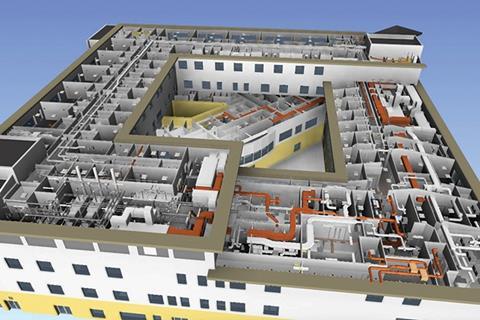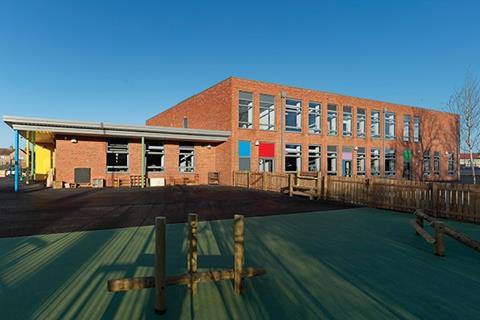Building Information Modelling is seen by many as the future of the industry, but who has made it to this year’s Building Awards BIM Initiative of the Year shortlist?

One place
Submitted by: HLM
One Place is architect HLM’s initiative to create one common platform hosting a common data environment that can be used internally and externally. It is built using the Union Square platform and acts as an intranet – a single point of information management and sharing for all staff, clients, consultants and supply chain members. It allows staff to access the same quality management system, data and financial systems, as well as allowing clients and other consultants to access project information. It can be accessed by staff in numerous locations at the same time and marks an ambitious attempt to combine traditional BIM capabilities with the multiple communication opportunities of internet and wireless technology

BIM for Construction Clients
Submitted by: Consultancy for the Built Environment
In a bid to promote the value of BIM to non-government clients, Richard Saxon of the Consultancy for the Built Environment has written a book for RIBA Publishing. The book seeks to increase general awareness of BIM and digital asset management by collating a comprehensive series of interviews, case studies and experiences charting various scenarios of involvement with BIM projects. The book was published as a forerunner to the government’s April 2016 BIM mandate deadline and has been cited as “sensible” and a “timely aid to clients”.

BIM for Conservation
Submitted by: David Miller Architects
The Barns project was a residential project involving conservation, refurbishment and new build. In order to secure commercial viability, a coordinated, digitised process was initiated that was centred on BIM-driven delivery. This incorporated a number of innovative digital technologies, including point cloud surveys, digital quantity take-off and procurement, COBie data incorporated into the asset information model and digital surveying and site set-out techniques.

BIMspace
Submitted by: Cullinan Studio
BIM is often seen as the preserve of the contractor, engineer and supply chain but this pioneering initiative marks an ambitious attempt to harness BIM as a tool that wrests control back to the architect. One of BIM’s more esoteric impacts has been to galvanise debate about the future role of the architect. BIMspace suggests that one of those roles could be to facilitate a collaborative 3D multi-screen meeting space, where clients can be immersed in multiple dimensions of embedded data to make more informed decisions and reduce abortive work. The initiative has been tested on live projects, including the National Automotive Innovation Centre (NAIC) for the University of Warwick.

Digitising Wharfedale
Submitted by: BAM
This radical initiative seeks to embed BIM into an area where many see its future lying – maintenance and building management. Traditionally, building maintenance has relied on paper and operation manuals. This project proves that by digitising processes, huge efficiencies and cost savings can be accrued. The new Wharfedale Hospital in West Yorkshire, which was used as a test-bed for the venture, has already benefited from an array of operational improvements. These range from more efficient maintenance procedures to savings in energy and cost. BAM created a BIM model of the hospital, which contains 4,000 assets and can enable staff to view behind walls and ceilings to see services such pipework or cabling. FM managers are able to access the current data using an iPad and QR codes located in rooms and on assets. This updates as they carry out testing or condition surveys. As a result the FM team can carry out 60 room surveys in two hours, which is 33% quicker than the manual system.

AHR North East Priority Schools Building Programme
Submitted by: AHR
The delivery of 12 schools – part of the Priority Schools Building Programme and spread across seven local authorities with a £100m-plus budget – is a massive undertaking under any circumstances. The design team felt a project of this scale, and one that already involved a high degree of standardisation, necessitated a more collaborative, coordinated and strategic approach. BIM was selected as the best way to achieve this. Some of the measures adopted included digital brief analyses, coordination data for facilities management and the widespread use of online collaborative digital processes and software. The standardised approach to the designs is of particular interest to the education sector, where budgets are tight – on this project the architect was able to update changes to all 12 schools simultaneously, reducing cost, time and risk to the client.
BIM in Operation DLCC Toolkit
Submitted by: Faithful+Gould
The application of the digital lifecycle cost toolkit has transformed how Faithful+Gould enables its clients to define, measure and manage the capital costs during project design and construction stages. It has also unlocked access to operational lifecycle cost data and associated operation and maintenance information. By practically applying lifecycle costs (5D) and maintenance data (6D) to 3D BIM, this imaginative initiative has simplified and transformed the process of integrating asset information models into BIM delivery both on major new build projects and on existing estates. The application of the toolkit has been game-changing for a number of Faithful+Gould’s clients, such as the Ministry of Justice, Manchester City Council, Parliamentary Estates and various universities, transport and aviation clients. And because the toolkit is a result of industry collaboration it has received endorsement from the professions as well as the BIM Task Group.
KT4BIM
Submitted by: KT4BIM
KT4BIM dilutes a complex process into a simple challenge, to deliver a BIM Level 2 project from start to finish that is in strict accordance with published BIM standards and guidance. Its key goals are to provide BIM learning and development for all stages of BIM aptitude across the project team, to develop a tool that measures the success of the implementation standards sought on a project and to create a greater understanding of BIM across the industry by sharing findings and experiences in case study format.

Digitising the Construction Supply Chain at Rathbone Square
Submitted by: Lendlease
This project aims to achieve what BIM was established to provide: a fully collaborative and coordinated digital workspace across large complex projects. Recognising the complexity of the major inner-city mixed-use redevelopment project in question, the client team sought a digital built asset vision from the start. It aimed to digitise the construction supply chain to realise it, presenting a procedural template that other projects could follow. Measures included clearly defining BIM requirements and roles, establishing BIM protocols, providing BIM training and ensuring continuous progress monitoring.
The statistics on the project are impressive: a total of more than 750 hours was spent on BIM education and training and 598 BIM models will have been delivered as part of the final digital built asset handover.
Digital Health Checks
Submitted by: Interserve Construction
Interserve was the first UK main contractor to win BRE BIM Level 2 certification and this pioneering level of innovation is clearly evident in this ground-breaking scheme.
Its BIM Competency and Health Check initiative is a two-pronged approach aimed at maximising BIM efficiency across its teams and supply chain. First it attempts to identify the digital strengths and limitations in its supply chain delivery partners in order to aid selection. Second it asks these teams a series of searching evaluation questions in order to ensure successful digital delivery. Interserve’s teams are now thinking about BIM from the outset and consider the health checks to be the norm.

At our Building BIM Show Live conference on 29 November there are seminars across four sessions each addressing major themes for construction. For more programme information and to book your place go to www.building-live.co.uk

To find out which project wins BIM Initiative of the Year, book a table to attend: www.building-awards.com




























No comments yet